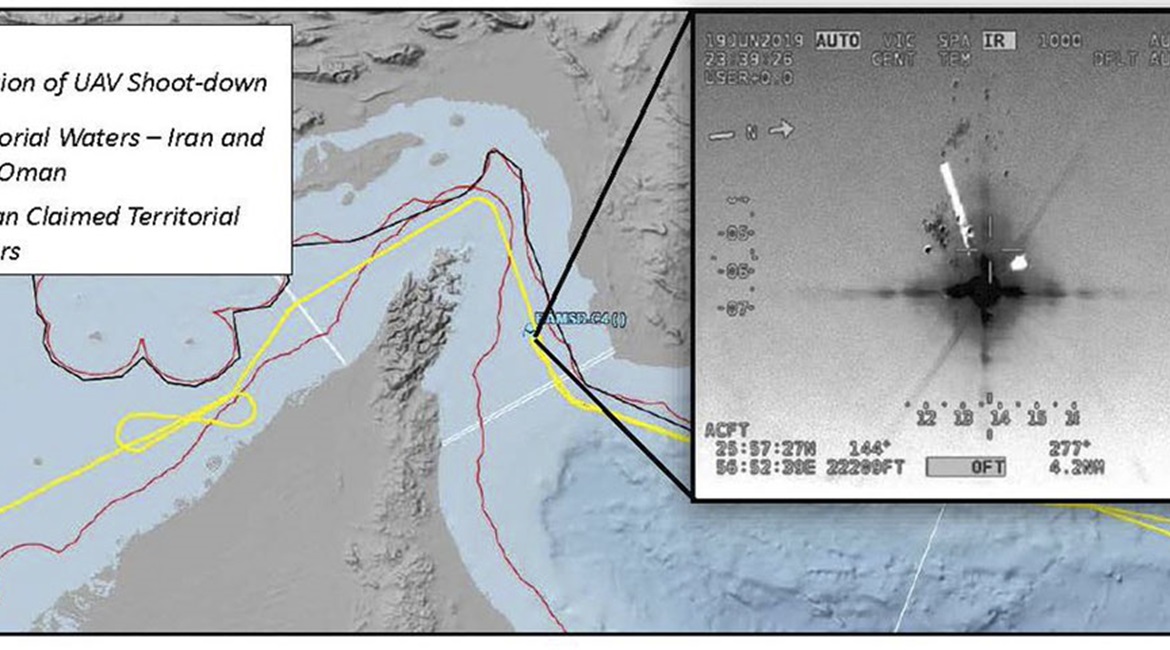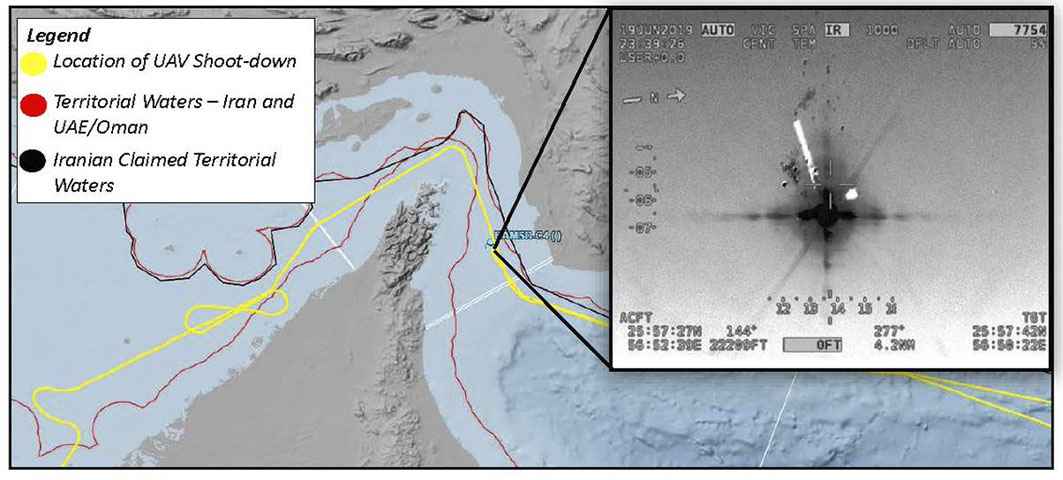
The US Air Force (USAF) continues to fly Northrop Grumman RQ-4 Global Hawk unmanned aerial vehicle (UAV) missions in the Gulf less than one week after Iran shot down a US Navy (USN) Global Hawk variant.
“We’re continuing to fly,” USAF Chief of Staff General David Goldfein said on 26 June at an Air Force Association (AFA) Mitchell Institute for Aerospace Studies breakfast. “We continue to fly where we need to be when we need to be there.”

An image released by US Central Command (CENTCOM) appears to show the location and altitude of the RQ-4A immediately before it was hit by an Iranian surface-to-air missile in international airspace. (CENTCOM)
The Iranian military shot down a Northrop Grumman RQ-4A Broad Area Maritime Surveillance-Demonstrator (BAMS-D) aircraft on 20 June with a 3 Khordad, an indigenously developed surface-to-air (SAM) missile similar to the Russian Buk-M2. Iran claimed the aircraft entered its territory without identifying itself. The United States disagreed, saying it was located in international airspace at an altitude of 22,209 ft (6,769 m) over the Gulf of Oman immediately before it was hit.
Gen Goldfein said that Global Hawk missions are part of the US effort to patrol global common areas, such as the South China Sea. The Strait of Hormuz, where the Global Hawk was downed, is also a heavy shipping area.
Gen Goldfein does not foresee the USAF changing its strategy for the Gulf region.
“I do not see a significant change in the capabilities of the force there,” he said.
Looking to read the full article?
Gain unlimited access to Janes news and more...




